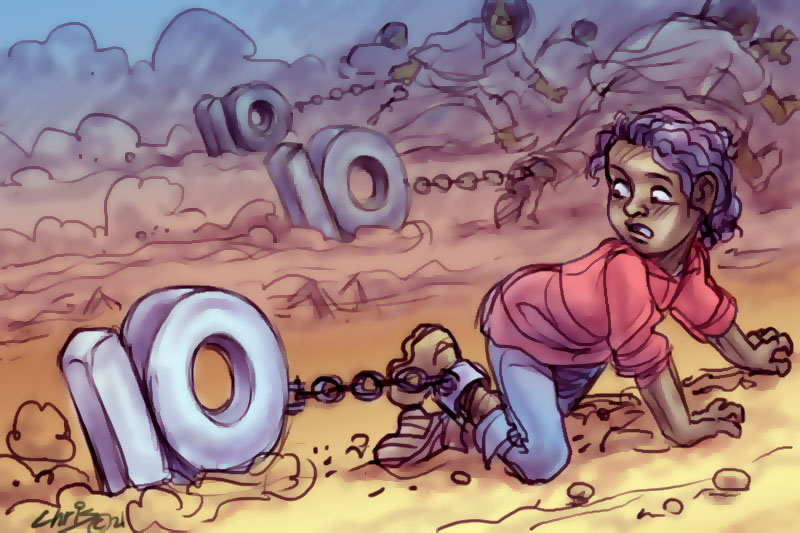Keywords: Juvenile Detention
There are more than 24 results, only the first 24 are displayed here.
Become a subscriber for more search results.
-

AUSTRALIA
- Andrew Hamilton
- 02 April 2025
Countering a rise in youth crime with tough new bail laws will ensure community safety, but risks compounding the very crisis they aim to solve. As more children are placed in detention, the changes raise urgent questions about justice, policy failure, and the long-term social cost of prioritising punishment over prevention.
READ MORE
-

AUSTRALIA
- Andrew Hamilton
- 07 September 2023
4 Comments
On the face of it, the decision of the Queensland Government to pass an amendment to permit holding children in police cells was a desperate and discrediting action. Underneath it, however, was a complex coming together of events, prejudices and attitudes.
READ MORE
-

AUSTRALIA
- Andrew Hamilton
- 20 July 2023
1 Comment
A Supreme Court judge in Western Australia has banned solitary confinement at Banksia Detention Centre, shining a light on the controversial practices within the nation's juvenile justice centres. Yet, public response remains muted despite the troubling revelations, raising concerns about systemic failures, the need for empathy and societal responsibility towards our youth.
READ MORE
-

INTERNATIONAL
- Julian Butler
- 20 June 2023
1 Comment
In the midst of societal debates about crime, rehabilitation, and policing, unexpected voices often surprise us, leading to thoughtful and transformative discussions. A conversation about youth crime between an ABC presenter and the Secretary of the Police Association challenges preconceived notions about youth justice and rehabilitation, paving the way for compassionate responses and a more humane society.
READ MORE 
-

AUSTRALIA
- Arnold Zable
- 14 September 2022
6 Comments
I am deeply saddened at the passing of inspirational actor, storyteller, artist, potter, musician Uncle Jack Charles. I loved him. I was one of the many who loved him. He was a gentle, loving, big-hearted man, despite it all. Because of it all. He triumphed over institutional racism, the legacy of colonialism, and the immense suffering, fragmentation, and trauma it left in its wake.
READ MORE 
-

AUSTRALIA
- Damien Linnane
- 27 July 2022
Two months into a 10-month prison sentence, I was placed in solitary confinement after having a nervous breakdown. I’d originally made a fruitless attempt to keep my breakdown to myself, because I’d been told what would happen if Corrective Services found out I was having mental health issues. One of the first friends I made in prison, like many of the inmates, was suicidal. ‘The best advice I can give you if you’re struggling with your mental health’, he told me, ‘is to do everything you can to keep it from the officers.’
READ MORE 
-

AUSTRALIA
- Julian Butler
- 22 February 2022
5 Comments
Having previously spent time as lawyer working predominantly in the Children’s Court of Victoria, there isn’t too much about the State’s treatment of young people that shocks me. That is, until a few weeks ago when I was drawn to the final item of The Weekend Australian’s editorial column. Under the heading, ‘Hurt boy’s inhuman treatment’, was set out the details of a 15-year-old West Australian boy who had been ‘locked alone in a glass-walled observation cell of a juvenile detention centre in the southern suburbs of Perth for 79 days.’
READ MORE 
-

AUSTRALIA
- Ross Homel
- 09 December 2021
2 Comments
A small minority of localities situated outside Greater Brisbane suffer from disproportionately high rates of a wide array of problems including low income, overcrowding, long-term unemployment, particulate matter in the air, no internet, child maltreatment, and youth crime. These different strands of disadvantage pile-up and interlock, countering attempts to break free.
READ MORE 
-

AUSTRALIA
- Andrew Hamilton
- 28 July 2021
9 Comments
The tidal movement from treating children as persons each with their own dignity, and worthy of respect and of encouragement to a good future, to treating them as adult and incorrigible criminals worthy only of punishment is both irrational and injurious of society as well as of the children themselves. Yet it is deeply rooted in the mindset of all Australian Governments.
READ MORE 
-

AUSTRALIA
- Celeste Liddle
- 15 June 2021
9 Comments
Those two little boys turn ten this year, reaching a milestone most Australians celebrate simply as reaching 'double figures'. Yet with these double figures comes a new threat most Australians aren’t aware of: they will also reach the age of criminal responsibility.
READ MORE 
-

AUSTRALIA
People ask why it took the death of George Floyd to make so many Australians stand up. His experience mirrored that of so many Aboriginal people who have died while in custody. His dying words ‘I can’t breathe’ echo through our hearts, because this isn’t the first time a Bla(c)k man has uttered those words while being brutally arrested for a crime most white people would get a slap on the wrist for.
READ MORE 
-

AUSTRALIA
- Bree Alexander
- 22 November 2019
4 Comments
From strip searches to a needlessly low minumum age of criminal responsibility, Australia continues to be a menacing place for children encountering law enforcement. The need to be seen as 'tough on crime' plagues the major parties and precludes nuances within the criminal justice sphere including the protection of the rights of the child.
READ MORE 